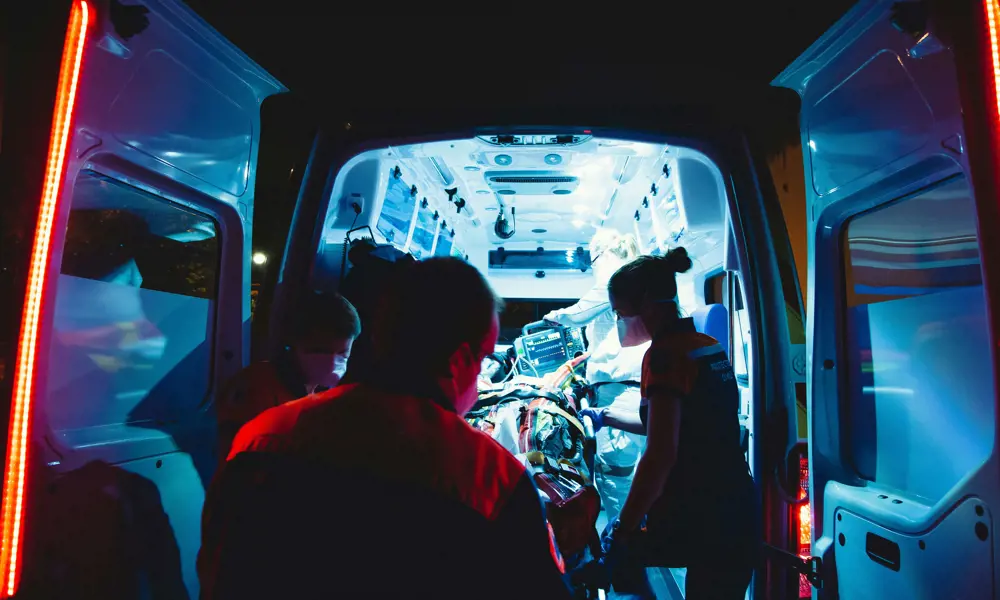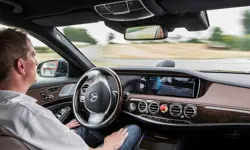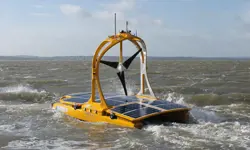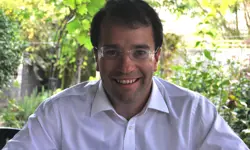
New tech creates 999 opportunities
Ask 999 callers what they expect from an emergency service and you receive a coherent reply: a human voice that provides a fast response that resolves their immediate personal crisis. If you ask emergency responders what they want to deliver they are equally clear – reducing suffering and saving life. However, the response is largely predicated on a verbal conversation with the caller that has barely changed in the 80 years since the world’s first service was pioneered by the police in London. Callers may be unable to adequately, or quickly, describe where responders can locate them let alone provide accurate information to assist in mobilising an appropriate response.
In caller’s minds there is little agreement of what an emergency constitutes: either the nature of the incident, its magnitude or severity. Crises can range from the need to extinguish a ‘fire’ – which can ambiguously range from a smouldering rubbish bin to an entire building engulfed in flames – to a life-threatening medical emergency where a rapid response can be the difference between death and a good chance of recovery. Mobilising scarce resources is a challenge: an ambulance with two paramedics might be dispatched and it turns out that they only dispense aspirin, or a fire engine arriving on the scene may immediately request support owing to the scale of the incident. Accurate information plays an important role in delivering an efficient and effective service.
Accurate information plays an important role in delivering an efficient and effective service
When a 999/112 call is answered, much technical activity has gone on behind the scenes. If the call is made from a GPS enabled device, this functionality is automatically activated and the location of the phone made available to responders. Yet, matching the response to the caller’s crisis remains largely manual, and effective triaging can take even skilled operators vital minutes. It is for this reason emerging technology such as artificial intelligence (AI) is starting to be used to analyse voice calls. With time of the essence it is also vital that skilled operators can draw upon imagery that might help clarify a call for assistance, but it is also important that they are not overwhelmed by having content involuntarily ‘pushed’ to them. Imagery could well be useful even after resource has been dispatched to upgrade or downgrade the response.
Smartphones now have capabilities far beyond just making a call for help. Those making an emergency call on their smartphone actually have access to seemingly boundless information through being connected to the Internet, the power of an awesome computing resource, and upwards of 20 measurements from sensors exhibiting increasing reliability and precision. Sensing can be extended to the actual owner by a smart watch.
Linked devices and phones are already aware of their immediate situation and are increasingly capable of setting this in a temporal context, possibly through several years’ association with the owner. Context can also involve spatial position: whether the phone is likely to be with its owner and whether that person is actively running or stationary and horizontal. Other sensors can provide what medics call ‘vital signs’ such as heart rate, breathing pattern, skin moisture level and temperature. Access to such information could help triage a personal crisis without the need for owner intervention, helping to better match any response by the emergency services closer to the actual need, thereby delivering a more efficient and effective all-round service.
Embracing these innovations, a future service can now be imagined beyond conventional boundaries. Currently the 999/112 service is largely response-focused despite non-emergency numbers such as 101 and 111 providing a preventative dimension. The immediacy of a personal response to a call for help is regarded as being invaluable, but technology is starting to emerge that can preempt a call having to be made in the first instance. Sensors associated with smartphones are already providing early notification that a medical emergency might be emerging, enabling early intervention. This capability is enabled by personal apps that are increasingly starting to address specific issues. While the app landscape is currently fragmented, the underlying capabilities tend to empower rather than instruct.
Any change to an established service like 999/112 will need to be considered – embracing change while ensuring continuity rather than disruption to the service. Apps for smartphones will continue to emerge, most likely at an ever-increasing rate. Many have been developed with good intentions but their developers often forget about the downsides that they create such as false alarms. In Britain, APCO, an emergency services trade association, runs a scheme to certify apps to ensure that when they are released they behave as intended. BT call centres that answer around 30 million 999/112 calls a year with the reassuring phrase “Emergency, which service?” are about to undergo change as the switched telephony infrastructure in the UK is migrated to IP – or Internet protocol – a true data thoroughbred. Changing the underlying technical platform will provide opportunities to integrate new services such as real-time text or imagery with greater effect.
There is a lot of activity with a common theme of harm reduction, largely characterised as being responsive to those in need of assistance. The future might be very different, involving emergency communications from the authorities – a sort of ‘reverse-999’ – and capabilities that empower people to make informed life-saving decisions not only for themselves but those around them thereby nuancing the personal emergency from passive to participatory. Making sense of the information available in our increasingly information-rich society to enable people to make personal decisions around harm reduction and provide emergency services with greater situational awareness to better match a response, is both an exciting and complex challenge.
***
This article has been adapted from "New tech creates 999 opportunities", which originally appeared in the print edition of Ingenia 81 (December 2019).
Contributors
Dr Nigel P Brown works for the UK government Cabinet Office in the Civil Contingencies Secretariat. The Secretariat works with government departments, the devolved administrations and key stakeholders to enhance the UK’s ability to prepare for, respond to and recover from major incidents. Nigel focuses on security and resilience strategy for the information and communications technologies and energy sectors. He is a chartered chemical engineer and holds BSc, PhD and MBA degrees from Imperial College London.
Keep up-to-date with Ingenia for free
SubscribeRelated content
Technology & robotics

When will cars drive themselves?
There are many claims made about the progress of autonomous vehicles and their imminent arrival on UK roads. What progress has been made and how have measures that have already been implemented increased automation?

Autonomous systems
The Royal Academy of Engineering hosted an event on Innovation in Autonomous Systems, focusing on the potential of autonomous systems to transform industry and business and the evolving relationship between people and technology.

Hydroacoustics
Useful for scientists, search and rescue operations and military forces, the size, range and orientation of an object underneath the surface of the sea can be determined by active and passive sonar devices. Find out how they are used to generate information about underwater objects.

Instilling robots with lifelong learning
In the basement of an ageing red-brick Oxford college, a team of engineers is changing the shape of robot autonomy. Professor Paul Newman FREng explained to Michael Kenward how he came to lead the Oxford Mobile Robotics Group and why the time is right for a revolution in autonomous technologies.
Other content from Ingenia
Quick read

- Environment & sustainability
- Opinion
A young engineer’s perspective on the good, the bad and the ugly of COP27

- Environment & sustainability
- Issue 95
How do we pay for net zero technologies?
Quick read

- Transport
- Mechanical
- How I got here
Electrifying trains and STEMAZING outreach

- Civil & structural
- Environment & sustainability
- Issue 95